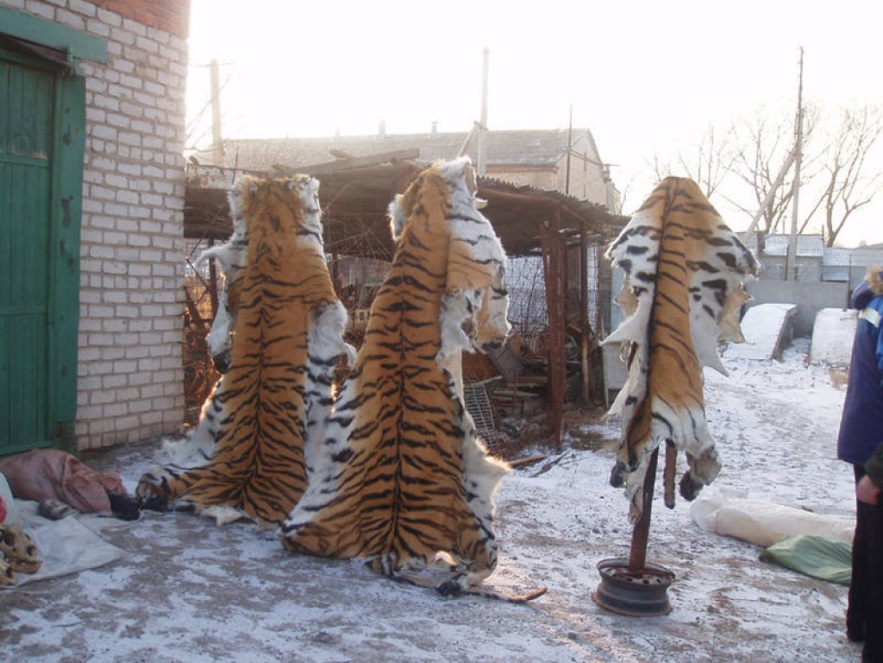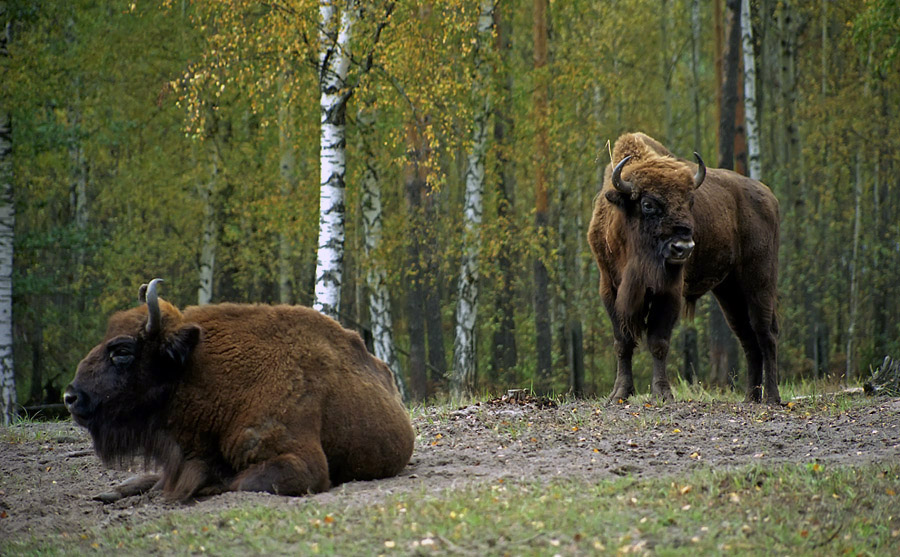ABSTRACT
in biology on the topic:
"Influence of Man on the Animal and Plant World".
Content.
Introduction.
Conclusion.
Bibliography
Introduction.
About 40 thousand years ago, quite recently by the standards of geological eras, a new species appeared on the planet - Homo sapiens. How did the relations of the "newcomer" develop with the animals and plants surrounding him? During its existence, man cultivated and began to grow about 2.5 thousand (i.e., only 1%) species of flowering plants. An insignificant minority of them - only two dozen - provides humanity with the main mass of food.
Developing civilization, a person reduces forests, plows up steppes, drains swamps, resettles and transplants animals and plants to new places, which crowd out the "natives". Such intervention in nature, as a rule, upsets the balance, and ultimately reduces biological diversity.
Perhaps someone will ask: “So what happens if these species disappear? After all, hundreds of others disappeared, and we hardly noticed it. What terrible thing will happen from the loss of several thousand species known only to specialists? Ecology convincingly answers this question: the disappearance of even species invisible to humans violates the delicate natural balance that has been developing for millions of years.
Human influence on flora and fauna.
Human impact on nature consists of the influence and indirect changes in the natural environment. One of the forms of direct impact on plants and animals is deforestation. Selective and sanitary cuttings do not significantly affect the species composition of forest biocenoses. Another thing is the clear-cutting of a tree stand. Once suddenly in an open habitat, the plants of the lower tiers of the forest are adversely affected by direct solar radiation. In shade-loving plants of the herbaceous and shrub layers, chlorophyll is destroyed, growth is inhibited, and some species disappear. Light-loving plants that are resistant to high temperatures and lack of moisture settle on the site of clearings. The animal world is also changing: the species associated with the forest stand disappear or migrate to other places.
A tangible impact on the condition of the vegetation cover is exerted by the massive visitation of forests by vacationers and tourists. In these cases, the harmful effect consists in trampling, soil compaction and its pollution.
Over the last two decades of the 20th century the area of the planet's forests has decreased by 200 million hectares and continues to decrease by 1% per year. TO  Every minute (!) 23 hectares of tropical rainforest are cut down. In the Amazon basin alone, 1 million trees die daily under saws and axes, and 5 million along the entire belt of the tropics.
Every minute (!) 23 hectares of tropical rainforest are cut down. In the Amazon basin alone, 1 million trees die daily under saws and axes, and 5 million along the entire belt of the tropics.
Powerful modern technology clears an area equal to the territory of a state like Nepal from trees in a year. At this rate, tropical forests will disappear in the first third of the 21st century. It is even difficult to take into account how many species of animals and plants will perish without a trace without becoming known to science.
Influence of man on the animal world and the causes of extinction of species.
Despite the enormous value of the animal world, man, possessing fire and weapons, began to exterminate animals even in the early periods of his origins. The main causes of biodiversity loss, population decline and extinction of animals are as follows:
- habitat disturbance;
- over-harvesting, fishing in prohibited areas;
- direct destruction in order to protect products;
- accidental (unintentional) destruction;
- environmental pollution.
Habitat disturbance due to deforestation, plowing of steᴨȇy and fallow lands, drainage of marshes, regulation of runoff, creation of reservoirs and other anthropogenic impacts radically changes the conditions for the reproduction of wild animals, their migration routes, which has a very negative impact on their numbers and survival.
For example, in the 60s and 70s the Kalmyk saiga population was restored at the cost of great efforts. Its number exceeded 700 thousand heads. Currently, the saiga in the Kalmyk steppes has become much smaller, and its reproductive potential has been lost. The reasons are various: intensive overgrazing of livestock, excessive use of wire fences, the development of a network of canals that cut off the natural migration paths of animals, as a result of which thousands of saiga saigas drowned in the canals along the way of their movement.
 Something similar happened in the region of Norilsk in 2001. The laying of a gas pipeline without taking into account the migration of deer in the tundra led to the fact that animals began to stray into huge herds along the pipe, and nothing could make them turn off the centuries-old path. As a result, many thousands of animals died.
Something similar happened in the region of Norilsk in 2001. The laying of a gas pipeline without taking into account the migration of deer in the tundra led to the fact that animals began to stray into huge herds along the pipe, and nothing could make them turn off the centuries-old path. As a result, many thousands of animals died.
In the Russian Federation, there is a decrease in the number of hunting species of animals, which is primarily due to the current socio-economic situation and their increased illegal production (for example, poaching).
Excessive production is the main reason for the decline in the number of large mammals (elephants, rhinos, etc.) in Africa and Asia. The high cost of ivory in the world market leads to the annual death of about 60 thousand elephants in these countries. However, even small animals are being destroyed on an unimaginable scale. According to the calculations of world socialists in the field of zoology and general ecology and Russian corresponding members of the Russian Academy of Sciences and doctors of biological sciences A. V. Yablokov and S. A. Ostroumov, at least several hundred thousand small animals birds. The volume of international trade in wild birds exceeds seven million copies.
Other reasons for the decline in the number and disappearance of animals are their direct destruction to protect agricultural products and commercial objects (the death of birds of prey, ground squirrels, pinnipeds, etc.); accidental (unintentional) destruction (on roads, during military operations, when mowing grass, on power lines, when regulating water flow, etc.); environmental pollution (ᴨȇ sticides, oil and oil products, atmospheric pollutants, lead and other toxicants).
In the central regions of Russia, 12-15% of field game perish during manual haymaking, and 30% during mechanized hay harvesting. In general, the death of game in the fields during agricultural work is seventy times higher than the volume of its prey by hunters.
The indirect impact of man on the animal world is the pollution of the habitat of living organisms, its change or even destruction. Thus, the populations of amphibians and aquatic animals are greatly harmed by water pollution. For example, the number of the Black Sea dolphin population is not restored, since as a result of the release of a huge amount of toxic substances into the sea waters, the mortality of individuals is high.
Conclusion.
It was only in the 20th century that mankind began to think seriously about the consequences of the destruction of animals. The Red Book was created, where information about rare and endangered species is entered.
There are species that are no longer found in the wild, but are still preserved in captivity. Man breeds such animals, accustoms them to wild life and releases them into suitable habitats.
In order to preserve the wealth of nature, nature reserves, sanctuaries and national parks have been created in almost all countries. These are areas of untouched vegetation with all the inhabitants, which are under the protection of the law. On their territory, any economic activity is prohibited, and even more so hunting, even tourist excursions are limited. Here the animal world is not threatened.
In 1992, the International Convention on Biological Diversity was signed in Rio de Janeiro (Brazil). It expresses the determination to preserve and maintain the wealth of all living things through common efforts. Whether people will be able to achieve this goal, the future will show.
Bibliography
Zakharov V.B., Mamontov S.G., Sivoglazov V.I. Biology: general patterns: Textbook for 10-11 cells. general educational institutions. - M .: School-Press, 1996.
Environmental Protection / Handbook. Compiled by L. P. Sharikov
Internet
